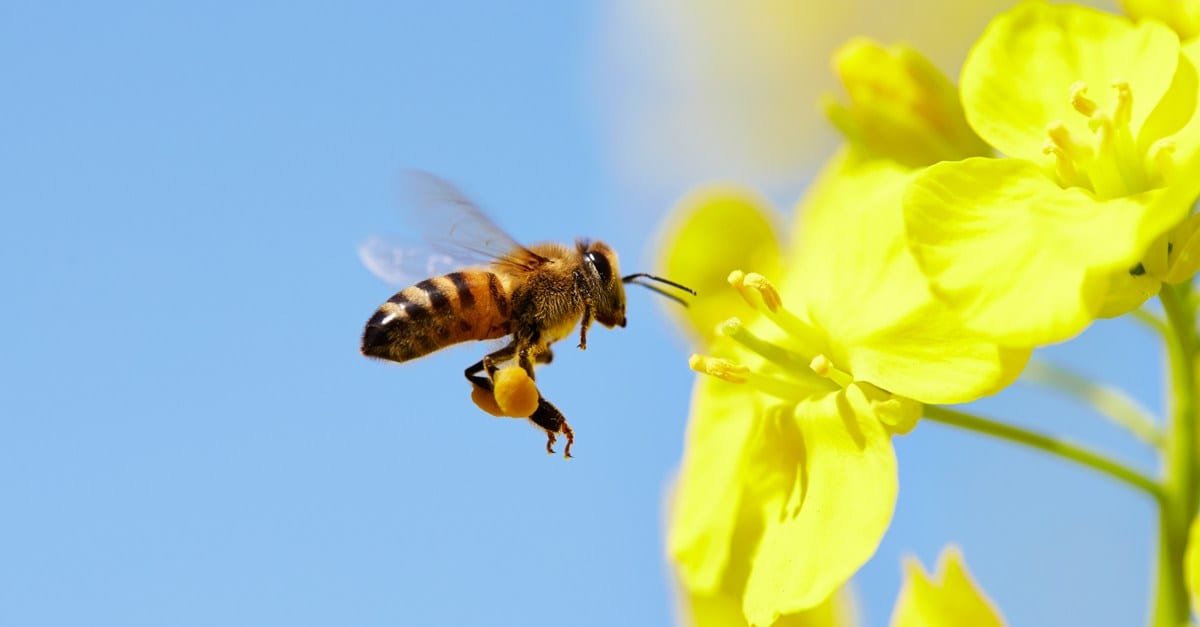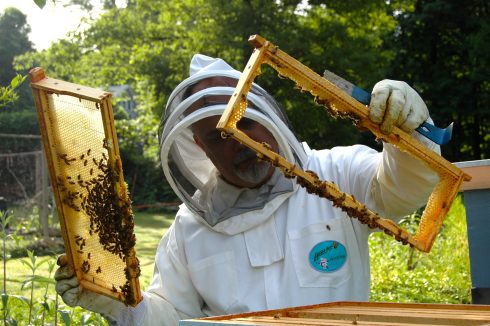
“IF the bee disappeared off the face of the Earth, man would only have four years left to live.”
Beyond its chill-producing sensationalism this famous quote – most frequently attributed to Einstein although there are other claimants to authorship – makes a stinging point.
Bees are not only a crucial component of our ecosystems. They ensure food security for all.
Bees are the kings and queens of insect pollinators. A third of the world’s food production depends on them.
Additionally, they indicate the health of an ecosystem; if something is wrong, changes in their behaviour are an early warning sign.
There are around 20,000 known species of bees, of which only a few make honey.
The western honey bee (apis mellifera, Latin for ‘honey-bearing bee’) is by far the most prolific.
Honey is an important traditional and economical factor in Spain.
The country is home to 2.45 million beehives and more than 30,000 beekeepers, which makes it the largest beekeeping nation in Europe, ahead of France and Greece.
It is also one of the EU’s top honey producers, hiving off 20 000 tonnes of the delicious nectar every year.
Amateur beekeeping is also a buzzing market, leading to heightened awareness of their essential role in biodiversity.

Spain showed a steady growth in honey production in the early 2010s. However the honeypot started shrinking in 2016, according to a Ministry of Agriculture report.
This downwards curve could be due to the crisis that has been ravaging the globe since the end of the 20th century with the sharp decline in other pollinators such as butterflies, hummingbirds and bats.
In 2015, the International Union for the Conservation of Nature (IUCN) assessed European bee species for the first time.
The organisation reported that 9.2% of wild bees are facing extinction in Europe, while 37% of the population is diminishing.
The largest numbers of threatened species are located in south-central Europe but the Mediterranean region is the most data-deficient.
Why bees are buzzing off
Many factors can be fatal to these winged benefactors. Here are some of the reasons honey bees could be toast.
The Colony Collapse Disaster (CDD), first given a name in 2006, designates the unexplained decline in worker bees.
The phenomenon has been observed throughout the history of apiculture and as far back as 1869, but to this day there’s no consensus on what causes it.
However, there has been a drastic increase in CDD in the last two decades.
Most other factors contributing to colony loss are due to human activity and modern globalisation.
For example, bees are more vulnerable to disease due to the faster circulation of parasites.
The varroa mite, originally from Asia, is a particularly virulent pest that arrived in plague numbers in Spain during the mid-80s.
Another bee-attacking parasite is nosema apis, also from Asia, observed for the first time in Europe when they made landfall in Spain in 2005.

Pesticides also have a harmful effect, both on bees and honey quality. Greenpeace found that two thirds of the pollen collected by bees is pesticide-contaminated.
Neonicotinoids are a type of pesticide particularly threatening to bees.
They are made of synthetic substances similar to nicotine that affect the central nervous system of insects.
In April 2018, the EU agreed to ban the outdoor use (but not in greenhouses) of the three most dangerous neonicotinoides (imidacloprid, thiamethoxam and clothianidin).
Most countries in the EU have yet to approve the motion, however, meaning that the ban is not effective and these pesticides are still being used. Moreover, many more detrimental pesticides are still in use.

Climate change, urbanisation and monocropping – growing a single crop on the same land year on year without rotation – are other factors decimating bee populations.
In April, pressure from NGOs forced the Spanish government to create a National Action Plan for bees and other insect pollinators in line with EU recommendations.
Along with a blanket ban on the three aforementioned nicotinoids, other initiatives include ‘promoting bee-friendly habitats, sustainable agricultural practice, the creation of suitable urban environment and reduction of the risk from plagues and parasites.’
How this will act out precisely has yet to be discussed.
Bee Responsible
World Bee Day is an opportunity to learn more about these flying philanthropists and what each of us can do, individually and collectively, to slow their decline.
Even though Spain is one of the largest producers in the EU, 80% of the honey consumed in Spain is imported from China, because it’s cheaper.
As the Olive Press reported, Chinese supermarket ‘honey’ is fake – made, more often than not, from rice or corn syrup.
You can support local beekeepers by buying their products at farmers’ markets, at the supermarket if it sells them or from sustainable local producers with an anti-pesticide policy.
Whether you have a garden or balcony plants, ban the use of pesticides, herbicides and fungicides.
If you must, choose natural alternatives. It is also a good idea to check that the plants you buy are not pre-treated.

A bee-friendly garden is a wild garden. Prefer native plants and let weeds grow.
There are many lists out there of roots and flowers that best attract bees and other pollinators.
You can also leave a shallow container of water for bees in the hot summer months. Make sure to put pebbles, twigs or corks in the water so that the bees don’t drown.
But the most important thing you can do is educate yourself about bees and encourage people around you to do the same.
Read books and blogs, watch documentaries or join an association.
In A Honeybee Heart Has Five Openings, one of the latest books on the market, bee-keeper Helen Jukes shares how bees helped her reconnect with nature and herself.
Un-bee-lievable!
· The earliest known record of humans harvesting honey comes from an 8,000-year-old cave painting at La Cueva de la Araña in Bicorp, Valencia.
· A honeybee’s wings beat around 230 times per second, which creates their buzz.
· Honey can be preserved a long time due to its acidity, lack of water and hydrogen peroxide content. In 1922, archaeologist Howard Carter tasted the honey discovered in King Tutankhamun’s tomb. He said it was delicious!
· During its life (6-8 weeks), a worker bee will fly the equivalent distance of one-and-a-half times around the Earth to produce one twelfth of a teaspoon of honey.
· Honeybees outnumber humans in London (by 30 to one in summer) due to the rise in urban beekeeping.












The answer to the question posed here is, yes, of course. We’re going to hell in a handcart. A hell all of our own making. Even if we did a screeching handbrake-turn tomorrow (unlikely) it’s doubtful if our grandkids would avoid dystopia.